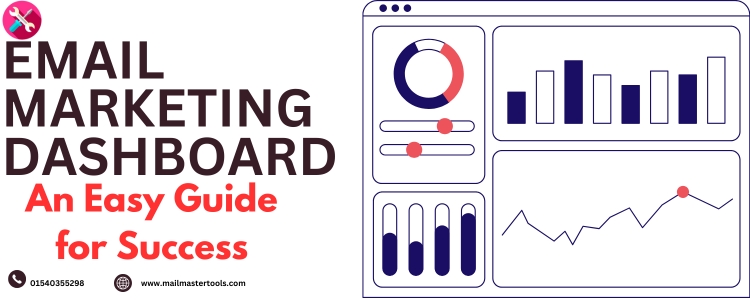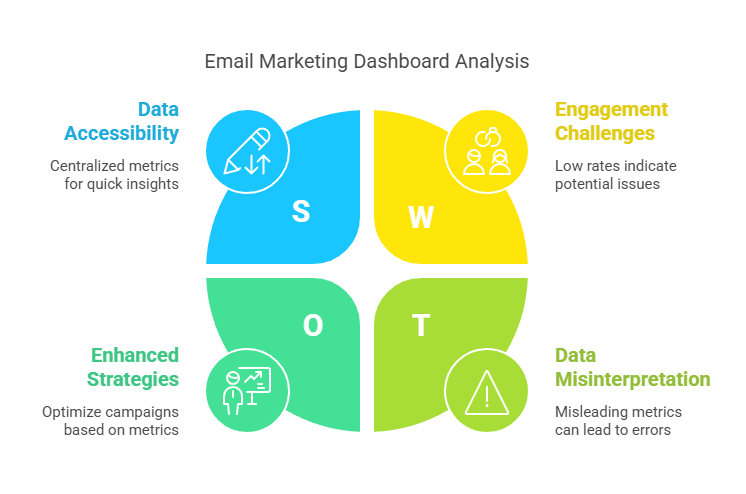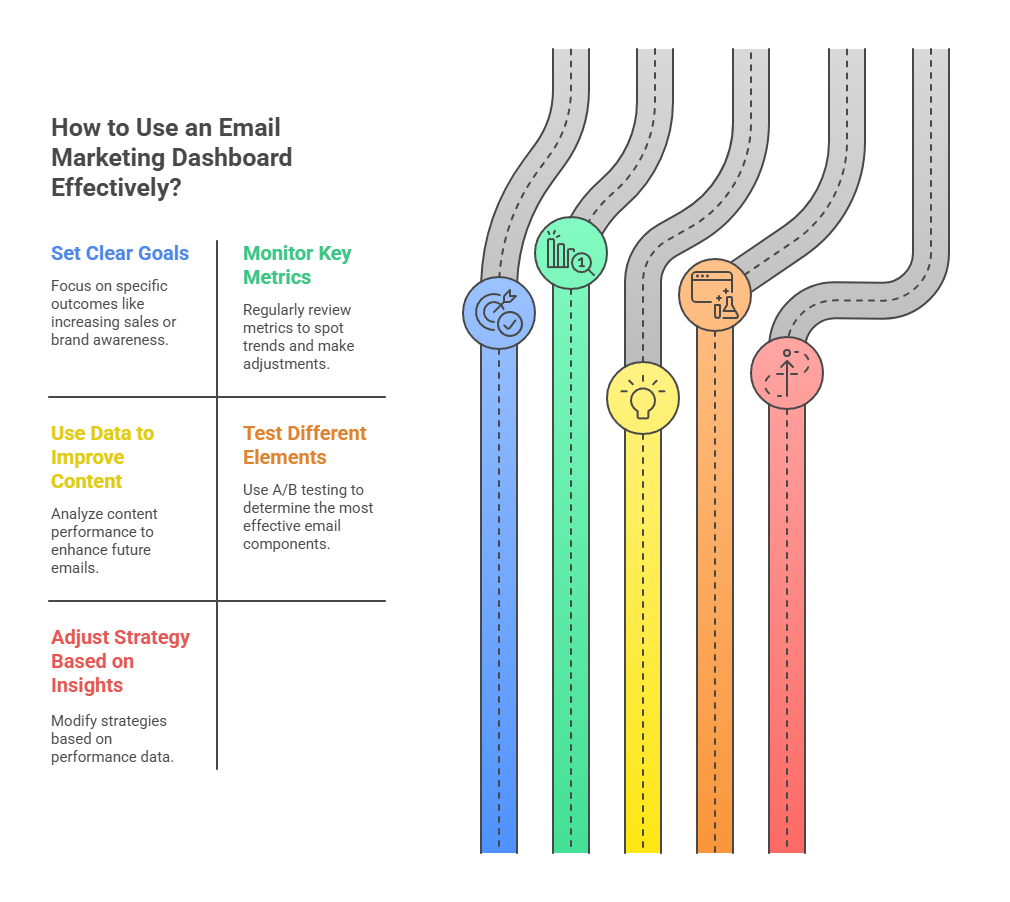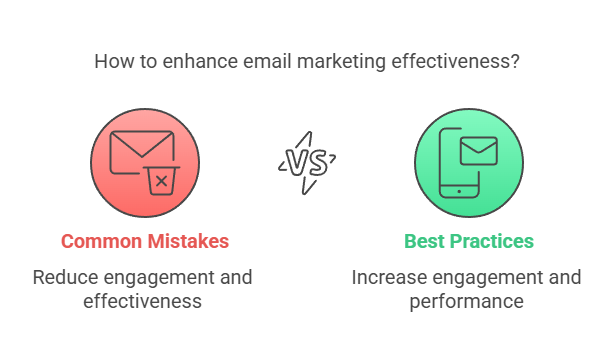Email marketing is one of the most effective ways to connect with customers. Whether you’re a small business or a large company, understanding how well your emails perform is crucial. This is where an email marketing dashboard comes in. It is a tool that helps track and manage email campaigns. With this dashboard, you can analyze key data and make better decisions.
Let’s dive deeper into the world of email marketing dashboards. We’ll explore how they work, their key features, and how they can benefit your email marketing efforts.
What is an Email Marketing Dashboard?
An email marketing dashboard is a visual tool that displays key metrics of your email campaigns. It gathers data and presents it in a simple, easy-to-understand format. This way, marketers can quickly analyze performance without getting lost in complicated reports.
The dashboard shows important details like open rates, click rates, bounce rates, and much more. With this data, you can improve your email strategies.
Why Do You Need an Email Marketing Dashboard?
You might wonder, “Why is a dashboard so important?” Here’s why:
-
Easy Access to Data: A dashboard puts all your email data in one place. This saves time. You don’t need to search through multiple reports. Everything you need is right in front of you.
-
Better Decision Making: With accurate data, you can make smarter decisions. For example, if you notice low open rates, you might need to change your subject lines. The dashboard shows where you need improvement.
-
Track Campaign Progress: A dashboard helps you see how your email campaigns are performing. It shows real-time updates, so you know if your strategy is working.
-
Improve ROI: By tracking the right metrics, you can improve your return on investment (ROI). You can see which emails bring in the most sales or engagement, and focus on what works.
Key Features of an Email Marketing Dashboard
There are many useful features that can make an email marketing dashboard powerful. Let’s go through some of the most important ones.
1. Open Rate
The open rate is a key metric that shows how many people opened your email. It helps measure how engaging your subject line and preview text are. A low open rate might mean you need to improve these elements.
2. Click-Through Rate (CTR)
The CTR tracks how many people clicked on a link within your email. This metric shows how engaging your email content is. If your click-through rate is low, you may need to improve the call-to-action (CTA) or content.
3. Bounce Rate
A bounce rate measures how many emails didn’t reach the recipient’s inbox. There are two types of bounces: soft and hard. Soft bounces are temporary issues, like a full inbox, while hard bounces are permanent problems, like an invalid email address.
4. Conversion Rate
The conversion rate tracks how many people completed the action you wanted them to take. This might be making a purchase, signing up for a newsletter, or downloading an eBook. High conversion rates show your email is effective.
5. Unsubscribe Rate
The unsubscribe rate shows how many people opted out of your email list. A high unsubscribe rate may signal that your emails are not relevant or valuable to your audience.
How to Use an Email Marketing Dashboard Effectively
Simply having an email marketing dashboard is not enough. You need to know how to use it to get the most value. Here are a few tips to make the most of it:
1. Set Clear Goals
Before looking at any data, set clear goals for your campaign. Do you want to increase sales? Build brand awareness? Knowing your goal helps you focus on the right metrics.
2. Monitor Key Metrics Regularly
Don’t just check the dashboard once and forget about it. Regularly review key metrics like open rates, click-through rates, and conversion rates. This helps you spot trends early and make adjustments.
3. Use Data to Improve Content
Your email marketing dashboard can help you understand what content your audience likes. For example, if certain emails have higher open rates, try to identify what made them successful. Then, use similar content in future campaigns.
4. Test Different Elements
A good email dashboard lets you track results from A/B testing. This means you can test different subject lines, images, or CTAs to see what works best. Always test and improve your emails based on data.
5. Adjust Your Strategy Based on Insights
If the data shows certain emails are underperforming, adjust your strategy. Change the frequency, subject line, content, or target audience. The dashboard’s insights help you make data-driven decisions.
Best Email Marketing Dashboard Tools
There are many tools available to track email campaign performance. Here are a few popular ones:
-
Mailchimp: One of the most popular email marketing platforms, Mailchimp offers an easy-to-use dashboard with reports and analytics.
-
SendGrid: This tool is great for email tracking, helping you monitor open rates, click rates, and other key metrics.
-
ActiveCampaign: ActiveCampaign provides detailed email reporting and insights, including data on email performance and user engagement.
-
Benchmark Email: This tool offers an intuitive email marketing dashboard with metrics like open rates, click-through rates, and bounces.
-
Constant Contact: Known for its user-friendly interface, Constant Contact also provides detailed insights into campaign performance.
How to Choose the Right Tool for Your Business
When selecting an email marketing dashboard, choose one that fits your needs. Consider the following:
-
Ease of use: Make sure the tool is easy for your team to use.
-
Features: Check for the specific features you need, like A/B testing or advanced analytics.
-
Integration: The tool should easily integrate with your existing email platform or CRM.
-
Pricing: Choose a tool that fits your budget and offers a good return on investment.
The Importance of Email Marketing Analytics
Analyzing email performance is crucial. It lets you see what is working and what isn’t. Data-driven decisions help you avoid wasting time and resources on ineffective strategies.
With email marketing, you have many variables to track, from the subject line to the content. Your email marketing dashboard helps you keep track of all these factors and optimize your campaigns.
Common Mistakes in Email Marketing
Even with a great dashboard, mistakes can happen. Let’s look at some common errors to avoid:
-
Not Segmenting Your List: Sending the same email to everyone can lower engagement. Use segmentation to send targeted emails to the right audience.
-
Ignoring Mobile Users: Many people read emails on mobile. Make sure your emails are mobile-friendly.
-
Not A/B Testing: A/B testing helps you understand what works. Without it, you miss valuable insights.
-
Overloading Emails with Information: Keep your emails clear and to the point. Don’t overwhelm your readers with too much information.
-
Neglecting Personalization: Personalized emails perform better. Use customer names and preferences to make your emails more engaging.
Email Marketing Dashboard Statistics
Recent statistics show how important email marketing is. According to Campaign Monitor, emails with personalized subject lines are 26% more likely to be opened. Furthermore, Statista reports that as of 2023, over 4 billion people use email worldwide. This shows the massive reach of email marketing.
How to Improve Your Email Marketing Dashboard
You can always improve your dashboard by focusing on a few key aspects:
-
Data Visualizations: Make the data easier to read with charts and graphs.
-
Real-time Analytics: Use tools that offer real-time updates on your campaigns.
-
Actionable Insights: Ensure the dashboard provides clear steps based on the data. For example, if your open rate drops, suggest improving your subject line.
Conclusion
An email marketing dashboard is a powerful tool for tracking and optimizing your email campaigns. By providing real-time data and key metrics, it helps you make better decisions. Use it regularly to monitor your campaign’s performance and improve your strategies. Whether you are just starting with email marketing or you are an expert, a dashboard is essential for success.
Frequently Asked Questions (FAQ)
1. What is an email marketing dashboard? An email marketing dashboard is a tool that displays the performance of your email campaigns, such as open rates, click rates, and conversion rates.
2. How do I use an email marketing dashboard? You can use it to track your campaign’s performance, analyze data, and make decisions based on key metrics.
3. What metrics should I focus on? The most important metrics include open rate, click-through rate, conversion rate, bounce rate, and unsubscribe rate.
4. How can I improve my email open rates? Improve your subject line, use engaging content, and ensure your email is mobile-friendly.
5. Can I use an email marketing dashboard for A/B testing? Yes, most email marketing dashboards allow you to track A/B test results, so you can refine your strategies.




